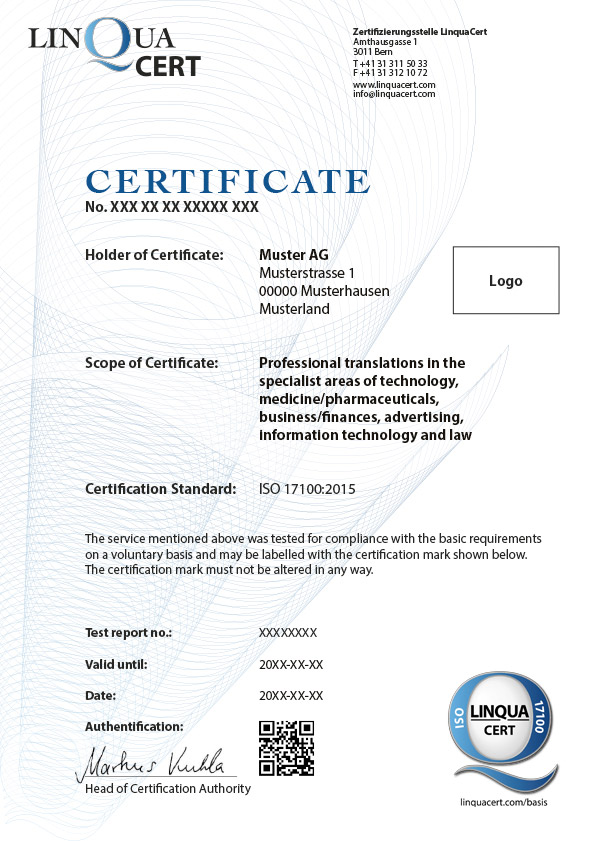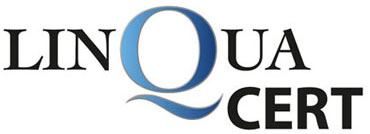
This is what an ISO certificate looks like
Of course, our certificates meet the ISO requirements for issuing such documents. They have a standard form that displays all the important information on one page. In this way, your customers can see at a glance which areas of your company are covered by the certification.
Request a free quote
Our logo and address adorn the upper part of the ISO 17100 or ISO 18587 certificate. This makes it clear who issued the document.
The certification number follows next. This is awarded exclusively by us and is unique to your company and the certification that has taken place.
Your address and your company logo are in a prominent place in the certificate so that your customers can quickly identify them.

The scope is particularly important: it explains what the certification relates to. In most cases, these are specialist translations in the fields of technology, medicine/pharmaceuticals, business/finance, administration, law, advertising or technology. The scope is issued for your specific departments that were audited as part of the certification.
The certification standard followed by the year in which the applied version was created. This is currently ISO 17100:2015.
The test report number is also used for transparency: it refers to the internal report that forms the basis for issuing the certificate for translation services. It can be identified and consulted by this number on request.
The QR code is used for electronic authentication and refers to a digital version of the certificate. Issue date and validity period indicate the period during which the certificate can be used.
You can use the certification logo as an advertising tool as part of your marketing activities within the scope of its validity. It shows succinctly that you are certified and according to which ISO procedures this was done.
The certificate is reissued for each exam. If it has expired, it will be checked and issued again. The limited term ensures that the processes examined will continue to be used and that the quality standard will still be maintained even after a few years.
